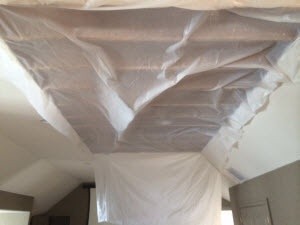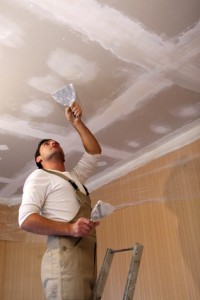Drywall Problems
 When it’s come to old building practices and habits? Die hard! New improvements and technologies are expanding nearly every area of our lives.
When it’s come to old building practices and habits? Die hard! New improvements and technologies are expanding nearly every area of our lives.
However, with all these advancements, it seems like home builders are overlooking the new and superior innovations while plainly sticking with the same things they have always done… drywall and wood studs. Though it is cheaper, this method has proven time and again not to function in a basement.
The bottom line: A basement is not like any other room in the home and a drywall is not significantly developed for this type of environment. No drywall-including mold-resistant drywall (otherwise known as green board), has a lasting warranty for issues as mold damage.
Certainly, it isn’t really required to survive a basement flood. Below are 5 simple reasons to select something more than just a drywall for your basement finishing.
Drywall Can’t Hold its Weight
Cabinets, shelves, hanging plants, large art work…anything exceeding ten pounds becomes an obstacle for drywall. In order to mount a heavier item, you will need to locate a wall stud to hold the weight; sometimes a difficult and unsuccessful task. Your positioning will be limited to the locations of these studs, which are often unevenly spaced throughout the walls.
As it is simple for drywall to fall apart under too much weight, it’s even more simple for you, your children, or a well-placed doorknob to leave a gaping hole.
Drywall Installation Dust

Plasterer working on ceiling
Drywall dust and the complications that come along with it are possibly the most unpleasant part of a basement renovation. Drywall is unclean! During a remodel, contractors cut these heavy panels for your basement and a thick, fine dust is kicked up, coating everything in the space. This dust can kill ordinary vacuum motors, clogging the air filters and causing them to overheat.
An expert drywall vacuum can be purchased for around $650, but this is impractical for a homeowner as they are generally used by professionals. Additionally, the plaster in drywall is aggravating to the eyes, sinuses, and lungs- always remember to wear masks, goggles and gloves during installation.
Service and Renovation Woes
Drywall ceilings are not the ideal choice in a finished basement when it comes to service or routing maintenance. They provide bad access to pipes and wiring, and in many cases, the drywall ceiling will eventually have to be eliminated to finish the work.
Setting up a service panel makes this process far simpler. However, it does not change the convenience of a suspended ceiling; every tile functions as a service access point. Installing drywall on a ceiling is a difficult and expensive process, and the completion result is hardly worth the effort.
Black Mold in Drywall
 There is no long-term warranty for drywall- even brands that declare to be mold-resistant. Why? Drywall is created with a gypsum core that is cut between two layers of heavy processed paper. Plaster has the tendency to soak up water and remain moist for long periods of time, which keeps the paper facing saturated long enough for mold to start growing.
There is no long-term warranty for drywall- even brands that declare to be mold-resistant. Why? Drywall is created with a gypsum core that is cut between two layers of heavy processed paper. Plaster has the tendency to soak up water and remain moist for long periods of time, which keeps the paper facing saturated long enough for mold to start growing.
Drywall mold begins its damage behind the walls, growing in the wet environment and sending thousands of mold spores into the home. As it starts to cover the outer surface, it eventually adds an ugly black stain on your wall’s surface. This stain will mature over time to include peeling, breaking paint, protruding marks behind the paint, and a mildew type of smell.
In unusual cases, drywall can likewise support the growth of harmful black mold, a dangerous and potentially deadly strain. However, even when black mold is not present, airborne spores may upset asthma and can lead to a range of breathing and health-related problems. In many cases, the entire drywall setup may need to be removed and completely replaced by a skilled expert prior to the area becoming healthy again.
“Green Board” is not Green
It’s an unfortunate fact. Think about the realities:
- Gypsum drywall comprises as much as 25% of the weight and debris from building and constructing activities. In 2000, Florida alone totaled up to 500,000 tons of drywall debris. Some garbage dumps have actually been banned from dumping drywall!
- As plaster drywall gets damp in a landfill, it adds sulfate to the water, adding unhealthy chemicals to the water table.
- As drywall gets moist and dissolves, it generates foul-smelling gas (hydrogen sulfide) into the air. This spreads out a smell like rotten eggs throughout the area.
- As much as 17% of drywall materials are lost during building.
- When non-synthetic gypsum is mined, it’s taken from shallow open-pit mines that substantially damage the environment.
Due to its low price and cheap design, there is no economical method to recycle plaster on the marketplace today. Hardly any drywall of any kind is being recycled, and the issue is getting worse with every overloaded garbage dump.
To schedule Basement Wet Drywall Problems appointment, call 888-651-2532 or click here.
